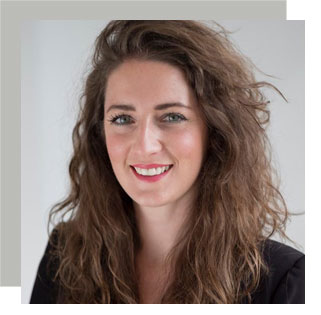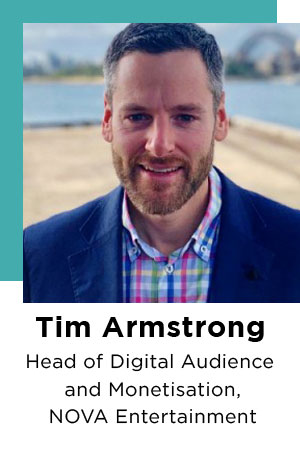Programmatic Summit 2021 homepage / Blog / Why Programmatic is the Future of Advertising
Programmatic in 2021 and Beyond
Now and Next: Why Programmatic is the Future of Advertising
 By Pippa Chambers
By Pippa Chambers
Content Curator, Ashton Media &
Former Editor, Adnews
Previously perceived as ‘too complex and difficult’, the true potential of programmatic has been realised as areas such as transparency, viewability, brand safety, invalid traffic and data credibility have been demystified. Ahead of this year’s Programmatic Summit, we speak with GroupM CTTO Ryan Menezes and Nova Entertainment’s Head of Digital Audience and Monetisation Tim Armstrong, to talk trends, challenges and more.
Addressability and accountability within programmatic advertising is “critical” to marketers, according to GroupM CTTO Ryan Menezes. Speaking alongside Nova Entertainment’s Head of Digital Audience and Monetisation Tim Armstrong, who highlights some of the obstacles inhibiting the investment into programmatic audio, the pair speak with Ashton Media about the trends in programmatic.
 From news of iHeartMedia buying ad tech business Triton Digital for US$230 million and Walmart ramping up its ad tech business to LG pushing programmatic advertising to smart TVs and Magnite buying SpotX for US$1.17 billion, the ad tech space is well and truly alive and kicking.
From news of iHeartMedia buying ad tech business Triton Digital for US$230 million and Walmart ramping up its ad tech business to LG pushing programmatic advertising to smart TVs and Magnite buying SpotX for US$1.17 billion, the ad tech space is well and truly alive and kicking.
With such a headline-making sector lies much opportunity, matched with many challenges – around measurement, viewability and placement – with incidents such as brand ads mistakenly featuring on websites carrying COVID-19 misinformation recently making news headlines.
In addition to what seems like an increasing amount of partnerships being formed across the ad tech sector, no media channel seems without innovation in programmatic. From audio to out of home, branded content and brandside, these areas have been busy pushing smarter data-driven automated buying efforts.
Closer to home, Optus Sport recently revealed it was building out its digital video advertising capabilities, Aussie startup Foxcatcher upped the ante in programmatic trading and according to Xandr study, Australia is leading the way in CTV.
With so much going on within programmatic advertising, and ahead of this year’s Programmatic Summit 2021, we caught up with some of the industry’s smartest ad tech minds to get their thoughts on what’s next within the world of programmatic.
On the question of if the many programmatic advertising-dominated headlines are justified, speaking to Ashton Media, Ryan Menezes, Chief Technology & Transformation Officer at GroupM, said yes.
“Most importantly, it’s forced all of us to upskill in a space that was previously perceived as ‘too complex and difficult’. This understanding of capabilities and a more collaborative approach has meant that we are only now experiencing the true potential of programmatic.”
Menezes, who joined GroupM in November last year from a head of digital and commerce role at Publicis Groupe’s Starcom, adds that demystifying areas such as transparency, viewability, brand safety, invalid traffic and data credibility has given clients the confidence to further invest in the space.
While it’s an area that GroupM has opted to take a leadership position in as it zones in on educating clients around this, Menezes said by no means is the job done.
“There’s more to be done in areas such as supply chain oversight and identity mapping,” he added.
Menezes said that from his perspective, programmatic is about addressability and accountability, both of which are increasingly “critical” to marketers.
He also believes that “way too much money is wasted” in delivering inundated media metrics, and at GroupM, it’s about focusing on providing oversight and optimising to how programmatic media is driving genuine business outcomes.
Audio on the up
 Also speaking to Ashton Media on the topic of trends in programmatic, Head of Digital Audience and Monetisation at Nova Entertainment, said that naturally, publishers want programmatic audio to be capturing more attention and spend.
Also speaking to Ashton Media on the topic of trends in programmatic, Head of Digital Audience and Monetisation at Nova Entertainment, said that naturally, publishers want programmatic audio to be capturing more attention and spend.
As one of the first radio stations in Australia to launch a dedicated programmatic audio offering to trading desks, Armstrong said the business had invested a lot of time into preparing its business for a programmatic future to ensure it can effectively scale and shift as the market grows, automation increases, and capabilities transition from direct to programmatic buying.
In terms of evolution, he agrees that programmatic audio is still a new channel for many as it goes through the same evolutionary progression other channels went through, especially video.
With this, he said the challenges range from accessibility, capability and creativity, right through to measurement.
In IAB Australia’s “Audio Advertising: State of the Nation” study, released this time last year, it said intentions to buy programmatically over the next 12 months had increased; driven by guaranteed and private marketplace deals.
While this is a positive and buying methods are shifting, work still needs to be done to boost efforts in programmatic audio.
“Right now the perceived lack of measurement seems to be inhibiting the investment into programmatic audio. With buyers used to a large range of metrics and insights from other channels, the same expectations have been overlaid on audio,” Armstrong said.
“Measurement now appears a major obstacle many are facing, that drive to have better insight around delivery and effectiveness put this at the top of the list. There are a variety of reasons for this, some of those come down to the technical capabilities available through audio ad tech.”
Armstrong argues that people need to “step back” to allow publishers to educate them on the intricacies of programmatic audio and ensure that the full breadth of opportunities available are acknowledged and understood.
Above all else, Armstrong notes that buyers need to exercise a level of patience that over time, programmatic audio capabilities will improve, scale will grow and audio as a channel will stabilise, then grow, in the same ways the industry has seen for other channels and programmatic.”
The future is programmatic
With programmatic seeping its way into all realms of the ad industry, it’s no surprise that in January this year, at the annual tech extravaganza CES, Marc Pritchard, P&G’s chief brand officer, said that ‘some form of programmatic’ is the future of all advertising.
GroupM’s Menezes said he too “absolutely” agrees.
“All channels can be programmatic as long as we have scalable inventory that can be data informed and tech enabled,” Menezes said.
He adds that WPP-owned GroupM has not only seen considerable uplift in CTV investment, but has also seen a lot of interest in digital audio and programmatic out of home space as advertisers look for more value and accountability for their investments.
To read more from Menezes and Armstrong on the buzzing ad tech space, alongside Sarah Wyse, General Manager Digital at AFL and Imran Masood, country manager ANZ at DoubleVerify, check out “Less fluff, Humanaised Tech and In-Housing – Top 12 Programmatic Predictions”.
—-
For more insight on programmatic innovations and challenges around connected TV, out of home, creative, brandside and more, check out the agenda for the upcoming Programmatic Summit 2021.

